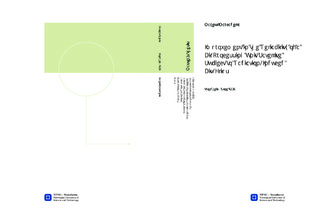Improvement in the Reliability of a Bi-Processing Unit Satellite Subject to Radiation-Induced Bit-Flips
Master thesis
Permanent lenke
http://hdl.handle.net/11250/2371110Utgivelsesdato
2014Metadata
Vis full innførselSamlinger
Sammendrag
The design of reliable spacecrafts is a challenging task because of the harshconstraints imposed by the outer space environment. One major cause offailure of part or totality of the system lies in the space radiations whichaffect the embedded electronic components, such as the introduction ofbit-flips in the memory devices.The work accomplished in this thesis attempts to improve the reliabilityof NUTS (NTNU - Test Satellite). The focus has been set on the researchof software techniques leveraging the hardware architecture available inorder to achieve tolerance against radiation-induced bit-flips.A study of the effect of bit-flips in both data and program memory hasled to the establishment of a stack of techniques aiming at increasingthe reliability of the system in a radiated environment. These techniquesconsist of the use of watchdogs, the corruption detection and correctionof the program memory, the recourse of a JTAG channel to reprogram adeficient processing unit, and the takeover of the whole system by oneprocessing unit in the event of a permanent failure of the second one.Each technique has been thoroughly tested individually in the presence ofbit-flip injection. Additionally, a test of the whole protective stack showedvery positive results since the system has been able to run successfullyfor more than 8 hours sustaining a bit-flip density 250 times higher thanthe expected on-orbit rate.
